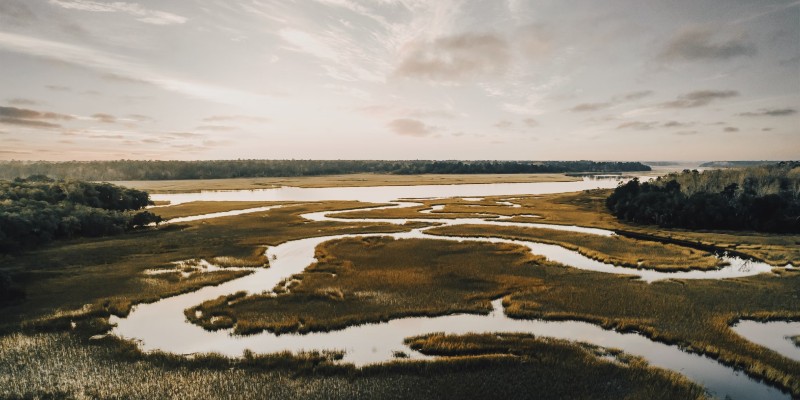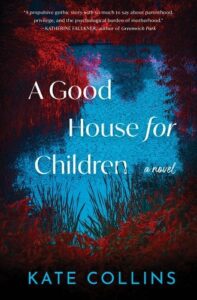Everyone knows that horror novels are meant to be read on a winter’s evening, curled up in the dark while the wind howls and rain drums the windows. We’re supposed to imagine the ghosts breathing down our necks as chill drafts leak through door frames and night descends earlier with each passing day. But I relish the experience of rising dread under the glare of the summer sun. To look up from the page – distressed, wary, pulse racing – and encounter the world in neon reality. I love reading horror in the summer, I love the contrast of being sucked into a dark, spooky story during the bright cheer of a sunny afternoon. Not very Goth of me, I know, but try it for yourself with my top ten list of summer horror reading, and you’ll be a convert.
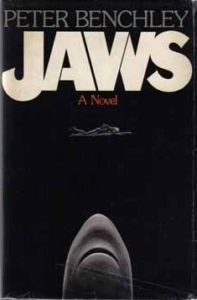
Jaws, Peter Benchley
Iconic. Where else to begin? Take your summer vacation on the picture-postcard beaches of Amity Island, where mainland dollars reign supreme and our dogged hero, Detective Brody, slowly loses his mind over the course of an interminable summer in the pursuit of Nature’s greatest predator. Never mind that the biggest threat to Amity is in fact its passively murderous town council, whose decision to leave the beaches (and cash registers) open to frolicking, juicy swimmers results in the death of a child (chomp!) – it’s the unseen menace lurking in the glittering ocean that has inspired decades of readers (and moviegoers) to declare they’ll never go in the water again. The shark persists, rapacious and invisible, making mincemeat of both the tender tourists and a small community’s psyche. I, for one, have never since swum in a lake or a pool without picturing a dark shadow moving slowly beneath my vulnerable, naked feet, a black-eyed killing machine perfected over millennia. Frankly, a perfect beach read.

Needful Things, Stephen King
King at his pinnacle, in my humble opinion. Set in Castle Rock, Maine, mysterious stranger Leland Gaunt arrives and opens up his curiosity shop, ‘Needful Things’. It has something perfect for every Castle Rock resident, and isn’t that just a happy little coincidence? And such good prices! Why, they’re practically a steal. But Mr Gaunt would like something in return, if you don’t mind… As in the best King novels, the real threat is the friendly neighbour, the unassuming gym teacher, the local cop. Spurred on by Leland Gaunt, a small town goes to war with itself over items that turn out to be nothing but cheap knockoffs, over simmering tensions escalated by Gaunt’s gleeful encouragement. Violence intensifies – knives are drawn and the town looks on as two former friends stab one another to death in the square. King’s magic is his ability to reveal the worst in us to ourselves, and in doing so creates the lasting fear that the only true evil in this world is one another. Never mind demons (which Leland Gaunt is eventually presumed to be), it’s the people next door you need to watch out for.
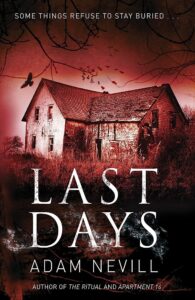
Last Days, Adam Nevill
Look, I don’t scare particularly easily. It takes something especially disturbing to prevent me from sleeping like the proverbial baby, and Last Days kept me awake several nights in a row during a sun-soaked Sicilian holiday (would absolutely repeat for the pleasure of reading this novel for the first time again). We follow indie film-maker Kyle Freeman, who is being paid a suspiciously large amount of cash to put together a documentary about the Temple of the Last Days, a now-defunct cult which rose to prominence in the 70s until their grisly – and self-inflicted – end in a cave in the Arizona desert. Kyle’s creative benefactor is an ex-cult member determined to prove that their more supernatural efforts, supposedly ceased all those decades ago, in fact yielded distressingly tangible results. Meet the Blood Friends, physical manifestations of hell-bound souls that first appear as vaguely skeletal shapes on walls and inside cupboards, but become horrifyingly real the longer Kyle investigates the cult and its sinister, charismatic leader, Sister Katherine. Nevill builds the creeping terror with relish; his flair for the grimy, desperate quality of truly excellent horror is unparalleled.

Picnic at Hanging Rock, Joan Lindsay
Intense, dreamy, inexplicable – the mysterious disappearance of three boarding-school girls and their teacher continues to unsettle, to frustrate, to send summery shivers down the spine. Valentine’s Day, 1900, Victoria, Australia. The students of Appleyard College set out for a picnic at local landmark Hanging Rock, an unusual geological formation out in the countryside that surrounds the school. The girls and their teachers eat, converse, nap in the heat. Shoes are removed, the day takes on a languorous and surreal quality. Four decide to climb the rock, despite the temperature, and are followed by a teacher. One turns back, delirious with fright, and the rest are simply never seen again. Theories abound, but none bear fruit. Search parties are mounted to no avail and Appleyard falls apart at speed. Based on a dream had by the author, Picnic at Hanging Rock is deeply imbued with layers of confusion, of helplessness. There’s something about an unsolved mystery that sticks, isn’t there; no closure, no explanation. Surely, that’s the true terror.

Just Like Home, Sarah Gailey
Vera Crowder returns to her childhood home one hot summer to care for her dying mother. The Crowder house is special, constructed by hand by Vera’s father to shelter and safeguard his beloved family. It has everything two loving parents could provide: a pretty little kitchen, a shady plot in a nice neighbourhood, a cosy bedroom for Vera, and a purpose-built cellar where Father Crowder can perform his serial killings in sound-proofed peace, complete with drainage channels. Vera knows her father wasn’t perfect, but she loved him anyway, and eventually she loved him enough to follow in his footsteps… Protected and spurred on by the house itself, which is as much a malignant, revolting, oddly sympathetic character as Vera, we watch through spread fingers as she wrestles with her history to find a twisted form of closure. As terrifying as Vera’s father was, it’s the present-day shell of her mother that’s the real horror, full of mucus and malevolence. The novel is a gruesome and profound meditation on nature, nurture, and reckoning with your past.
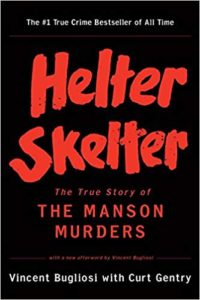
Helter Skelter, Vincent Bugliosi with Curt Gentry
An impressively detailed chronicle of the Manson Family, Helter Skelter is the best-selling true crime book in history for a reason. Vincent Bugliosi was the lead prosecutor for the state of California’s case against Manson (most famously for the Tate-LaBianca murders), and with the help of ghostwriter Curt Gentry, he produced an account that is thoughtful, exhaustive, respectful. Sensational? Absolutely, how could it not be? But the work is meticulous, almost dry in places, and the understated tone serves only to heighten the erratic brutality of the Family. He recounts the various missteps made by the LAPD during their initial investigation with both accuracy and grace; the reader can’t help but admire how much Bugliosi did personally to gather evidence in a case that was forensically limited – it was Bugliosi who secured Linda Kasabian’s explosive eyewitness testimony in exchange for immunity. The dusty, arid landscape of Southern California hums in the background, a psychedelic heat fuels the social and political tensions that, Bugliosi argued in court, underpinned the haywire logic of Manson’s ‘Helter Skelter’ race war theories, and the resulting murders. There’s no fiction that can match this kind of horror.
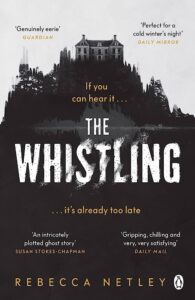
The Whistling, Rebecca Netley
Nanny Elspeth Swansome arrives on the remote Scottish island of Skelthsea in 1876 to care for her new charge, a small and silent girl named Mary who hasn’t spoken a single word since the tragic death of her older brother. Mary lives with her aunt in their grand old family home, Iskar, which has all the beloved hallmarks of the classic haunted house: dark corridors that hum with the wind, ancient creaky floorboards, gloomy hanging tapestries and inadequate fires in freezing rooms. Elspeth’s attempts to rehabilitate Mary are broadly unsuccessful, until mysterious objects begin turning up under Elspeth’s pillows and hatchet-faced locals make enigmatic allusions to darker deeds at Iskar. I love classic Gothic, and this novel has all the familiar qualities of the very best in historical haunted-house literature. For fans of The Turn of the Screw and The Haunting of Hill House, The Whistling guarantees some welcome shivers on even the hottest of summer days.
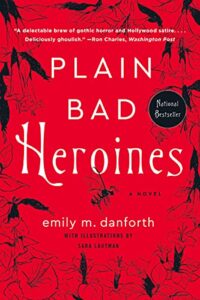
Plain Bad Heroines, Emily E Danforth
Clearly, I can’t get enough of boarding-school creepshows. Plain Bad Heroines is a Gothic meta-delight; the whole novel a sly, sexy wink to camera. Brookhants School for Girls is both cursed and haunted, a perfect stage-set for turn-of-the-century Sapphic yearning, for teenage hysteria, for death made legend by generations of over-excited and under-sexed girls. In 1902, Clara and Flo are boarders at Brookhants and desperately in love with one another, until a night-time tryst leads to their deaths by way of a swarm of vicious yellowjackets. Their ghosts haunt the grounds (allegedly), and the reputation of the school never recovers. In the present day, a production company secures the abandoned site for filming a movie of Flo and Clara’s story starring two up-and-coming young actresses. Mysterious events occur (don’t they always?) and the cast and crew grow convinced that Flo and Clara have never really left… Expertly weaving together these dual timelines, Danforth conjures a gorgeously Gothic backdrop for her characters, queer and in love and unabashed. Footnotes provide an academically authentic feel, a ‘found footage’ realness that underpins the deliberately B-movie atmosphere which is particularly effective in the contemporary narrative. Funny, tender, with plenty of bumps in the night.
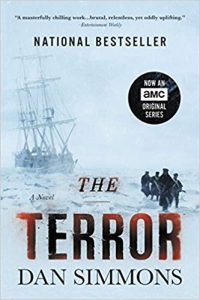
The Terror, Dan Simmons
There’s nothing like a good Arctic cannibalism story to lend a chill to your summer afternoon. Based on the real-life story of Captain John Franklin’s 1845 expedition to discover the fabled Northwest Passage to Canada, Simmon’s novel takes an historic mystery rife with gory reality and ratchets up the fright. Leading ships HMS Terror and HMS Erebus, Captain Franklin, his second-in-command Captain Crozier, and their men end up marooned for two years in pack ice following an unusually cold Arctic summer, never to be seen again. What became of them was gleaned over the following several decades, mostly from snippets of information from local Inuit who glimpsed skeletal white men staggering through the hostile landscape. Some remains were found by search parties in the later years; notably, bones bearing marks of cannibalism. An horrific fate on its own, Simmons introduces a supernatural element in the form of a shape-shifting Arctic spirit that stalks the men across the ice, in the dark, in the endless blinding snow. It tears men limb from limb, it inspires mind-bending fright in the crew trapped by the limitations of their weak humanity in such an inhospitable world. Survival horror at its finest.

Water Shall Refuse Them, Lucie McKnight Hardy
Sixteen-year old Nif and her five-year old brother, Lorry, arrive with their parents at a shabby little holiday cottage in an isolated Welsh village. Their father, reeling from the recent drowning death of Lorry’s twin, has decided a change of scene for the summer is just the ticket. Their mother, disaffected and functionally catatonic, doesn’t care either way, and the children are left to languish in the brutal heatwave of 1976. Nif is visited by a mysterious force which she has named ‘the Creed’, manifesting itself as a compulsion to control, care for, and harm the living beings around her, including Lorry. Nif collects talismans of this dawning belief system, her ‘relics’; bird skulls, feathers, bone. An herbalist neighbour delivers unidentified potions to Nif’s stricken mother, who sees her dead daughter in every cobwebbed corner of the run-down house. Hyper-religious churchgoers brand the family as wicked outsiders, unwelcome and un-Godly. Folk-horror elements abound, intensified through the lens of adolescent emotion. The narrative is propelled by the perpetual mystery of exactly how Nif’s little sister died; the resolution is both shocking and satisfying.
*

